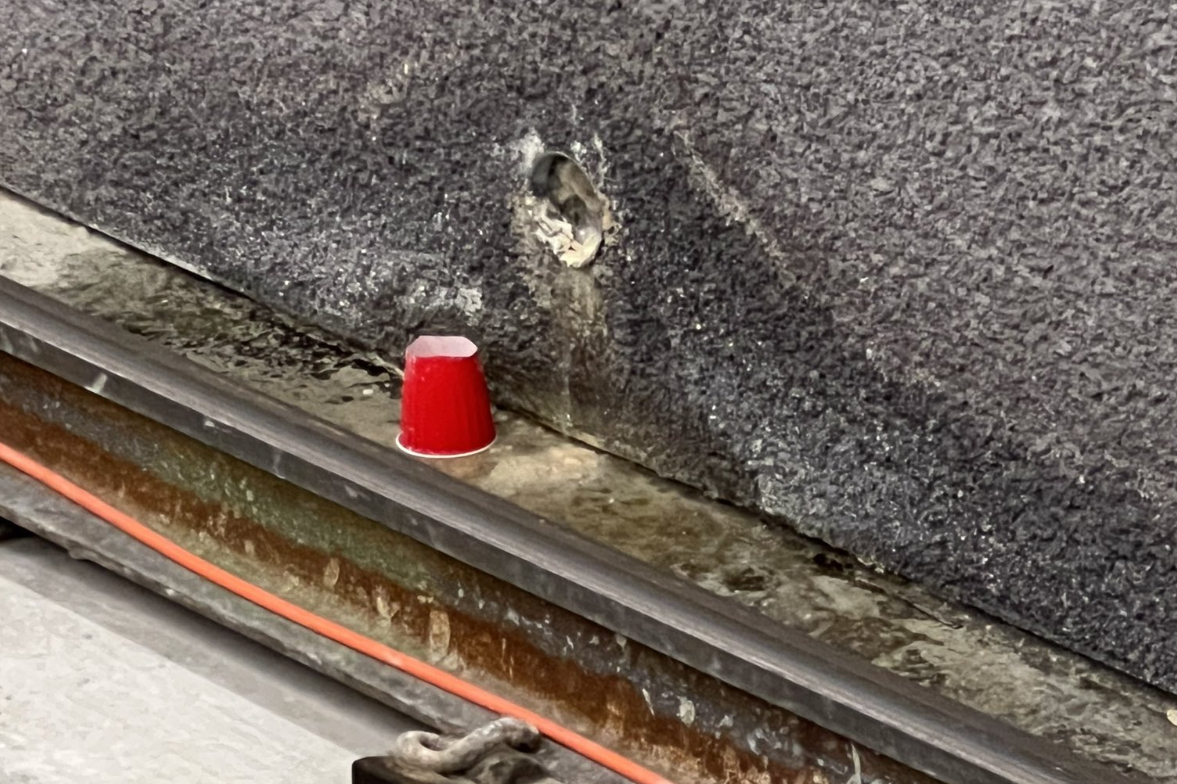SF transit bosses say the use of red plastic party cups for drainage at one station along San Francisco’s new $2 billion Central Subway line came down to a supply chain issue.
When questioned about it at a recent San Francisco Municipal Transportation Agency Board of Directors meeting, Director of Transportation Jeffrey Tumlin said, “While I thought they were a brilliant solution while we waited for the parts to arrive, others did not.”
The cups seemed to be directing water outward at the Union Square/Market Street Station, retired architect and Save Muni member Howard Wong said.
“[Without the cup,] the water jet would expand the hole and could migrate in multi-directions,” Wong said, adding that the depth of the subway creates powerful pressure that pushes water out with great force.
“It looks like the cup was a simple fix to keep the water off the wall,” Muni drivers’ union rep Pete Wilson said.
Riders shared photos and video on social media of classic party cup—best known for use at college ragers—spouting water during the subway’s first weekend of service.
“They were an interim solution to extend the (drainage) water past the wall, and they will be replaced by proper drain holes. They have already been removed,” SFMTA spokesperson Erica Kato said in November.
Water intrusion is an ongoing issue for the subway system. Persistent leaks delayed the opening, according to an independent monitor tracking the project on behalf of the federal government.
“We’re using the weekdays to continue critical operator training and are finalizing any changes or construction fixes that need to occur for January’s official opening,” Kato said.
